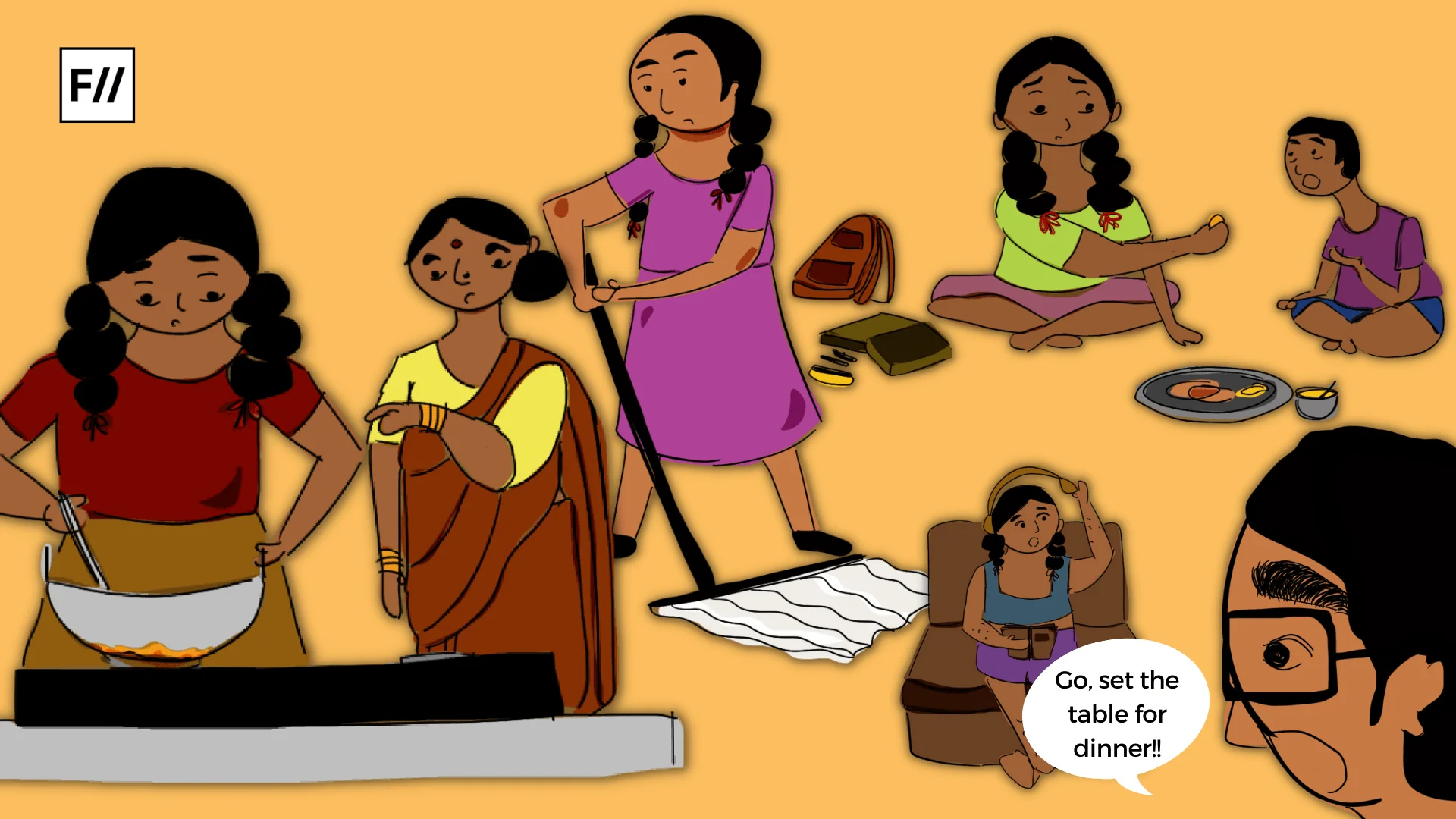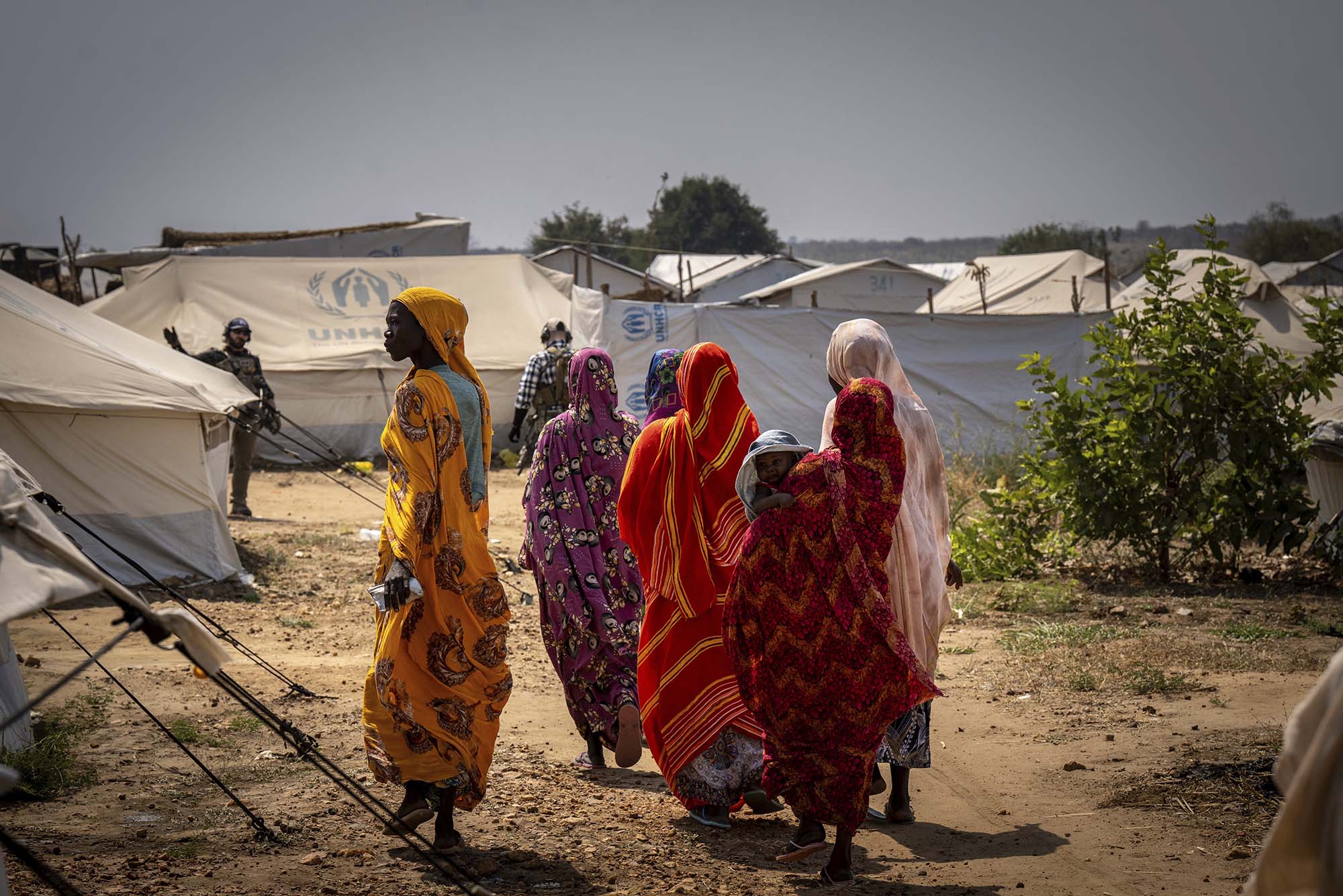Forest ecosystems are increasingly falling prey to changing temperatures, rainfall patterns, and pollutant concentrations; leading to forest fires, drought, and loss of biodiversity. Women, belonging to a majority of the world’s underprivileged population, and fairly dependent on natural resources, are not only threatened by climate change but also by the gradual decline of forests. The added social, economic, and political barriers faced by women further limit their capacity to partake in mitigation and adaptation initiatives.
Access to forests is particularly critical for Adivasi women. Studies have determined that the role of Adivasi women in gathering food and forest items is central to the food production system in the country. In rural areas of Africa and Asia, including India, many communities are dependent on forest biomass for their livelihood and households.
The gathering and use of this biomass are largely the responsibility of the women of these communities. As forest cover declines, these women are forced to travel farther to procure the material, a task taking more than 20 hours at times. This leaves hardly any time for work, politics, or even education. Not only does this continue a cycle of disempowerment, but these women become more vulnerable to injuries and harassment due to increasing distances and hours.
Forests, therefore, contribute to women’s social identity, economic independence, and growth opportunities. Yet, despite their deep relationship with forests, women are denied participation in forest conservation and governance.
The absence of women decision-makers in forest governance
In 1980, the Indian Forest Service introduced its first women officers. This number has hardly grown since, with women constituting a dismal 9 percent of the total workforce as of 2020. Not only are women systemically excluded from leadership and decision-making roles, but their participation is further watered down in community-led programs. This gender disparity widens further when Dalit, Bahujan, and Adivasi women are considered.
But why does the involvement of women in leading forest conservation roles matter? For one, their dependence on forests means women have deep knowledge of the ecosystem alongside having the skills needed to identify, forage and manage its resources. Indigenous and rural women are estimated to comprise more than 50 percent of the population dependent on land worldwide. Excluding these voices from conservation and land management decisions, therefore, means excluding an entire group’s knowledge and rights to managing forests.
However, despite being systemically left out by administrative authorities, Adivasi women have significantly contributed to the preservation of their forests.
Including women is, however, not as simple as giving them positions in decision-making bodies. The social, economic, political, and cultural norms are such that most women hesitate to take the lead, the ultimate weight being given to the man’s word. The process is therefore a gradual one, aimed at long-term education, recognition of rights, and established independence, for women to not only represent but actively participate in critical conservation discussions
Also read: Suryamani Bhagat: The Grassroots Activist And Educator At The Helm Of Forest Conservation Movements
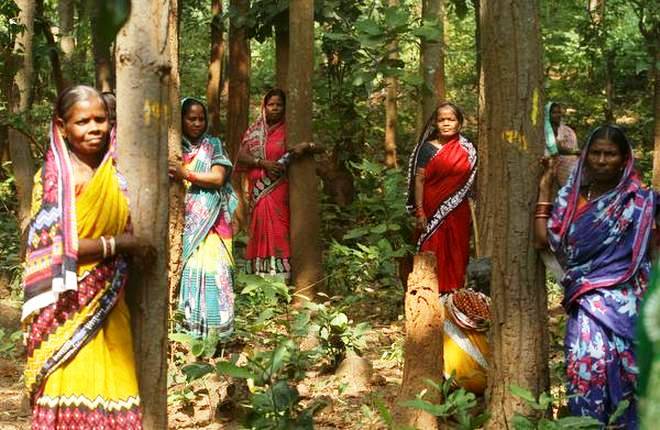
Protecting their land: Stories of India’s Adivasi women
The Kodarapalli tribal village of Odisha has made headlines in the past year for the “Thengapalli” practice adopted by its women. Translating to sticks-turn, it involves women taking turns to patrol the forest area with lathis. They crack down on smugglers, thieves, and timber mafia in a bid to protect forest land and resources.
Having preserved over 50 acres of forest land, the women are determined to protect the forest that supports their survival. This conservation approach has been around longer than India’s Forest Rights Act. It began in Nayagarh in the 1970s, when a group of women brought a timber thief to justice. The women were more likely to be harsh with the smugglers, which led to them eventually leading forest patrol efforts.
Villages within the forest show remarkable community-driven conservation efforts. Approaches like socioeconomic alliances across villages and the provision of water to douse fires during summer have resulted in 135 villages protecting 1/3rd of Odisha’s forests.
Jharkhand’s Jamuna Tudu is known nationwide for her contribution to preserving the forests in the State. Her group, the Van Suraksha Samiti, comprises over 60 women who patrol the forests in shifts, at times risking their lives to fight smugglers, thieves, and vandals. Although Jamuna was honoured by the President for her efforts, her journey in forest conservation began with an understanding that authorities are of little help. The determination of the Van Suraksha Samiti to fight miscreants despite the dangers is another reminder of the reverence that Adivasi communities have for the forests that sustain them.
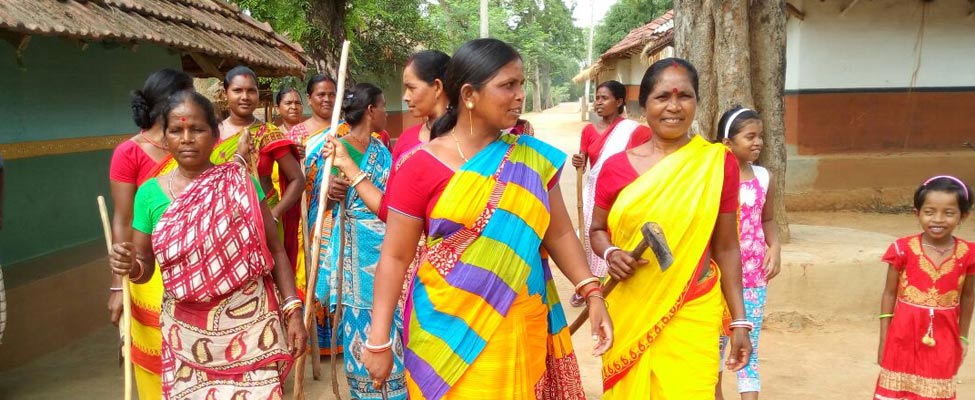
In Maharashtra’s Gondia, community forest rights are bringing women financial independence. In 2013, Dhamditola village was given forest land through community forest rights, leading to a source of income for the families. The village was also provided with access to water and cooking gas, lending women more time to work in the fields and earn money. Financial independence and agency gradually empowered these women to take on central roles of governance in the village.
A good place to begin achieving critical mass is the collection of data. This includes data regarding the distribution of vulnerable communities across forest regions in India and understanding their socioeconomic and cultural circumstances. Solutions must be contextual and localised to the community to achieve women’s participation and conservation effectively. Collecting data on gender parity in forest governance in India is also a crucial starting point
Each gram sabha meeting has at least one woman in attendance and many villages see women constituted self-help groups that routinely contribute money to developing a fund that can be used for low-interest loans. Financial independence and access to funds have allowed these women to rebuild their houses or even gift themselves good clothing.
The knowledge and participation of women in governance are key to protecting India’s forests. Access to decision-making leads to economic independence among these women.
Encouraging participation of women in forest governance
Including women is, however, not as simple as giving them positions in decision-making bodies. The social, economic, political, and cultural norms are such that most women hesitate to take the lead, the ultimate weight being given to the man’s word. The process is therefore a gradual one, aimed at long-term education, recognition of rights, and established independence, for women to not only represent but actively participate in critical conservation discussions.
The traditional knowledge of Adivasi women in particular and their connection to forests must be recognised. Adivasi women have already been contributing to an increase in India’s forest cover. Be it the Kodarapalli women preserving ⅓rd of Odisha’s forests, or the women of Jharkhand’s Muturkham saving 50 hectares of forest land from the timber mafia. Yet, these women and their contribution fail to find mention in reports documenting India’s forest cover increase.
Studies have shown that women-led decision-making in forests benefits both the forest ecosystem and the local communities. Active policy leadership of women in a region is also more likely to inspire future female leaders. It is important to take into consideration what the ideal fraction or “critical mass” of women in forest conservation is, for effective participation. This number is estimated at 30 percent today, although the ultimate goal must be 50 percent.
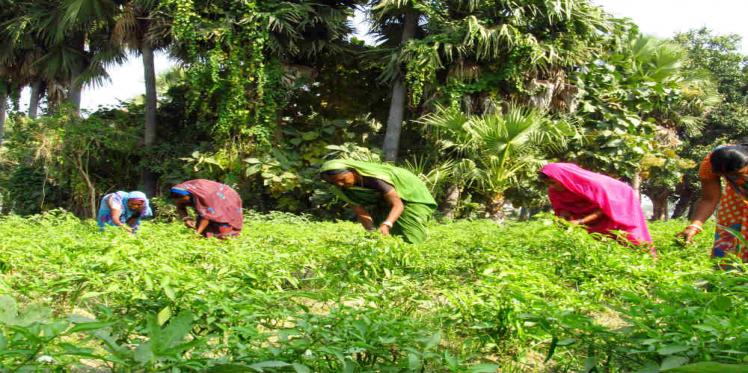
A good place to begin achieving critical mass is the collection of data. This includes data regarding the distribution of vulnerable communities across forest regions in India and understanding their socioeconomic and cultural circumstances. Solutions must be contextual and localised to the community to achieve women’s participation and conservation effectively. Collecting data on gender parity in forest governance in India is also a crucial starting point.
While encouraging more women to take up decision-making roles, the provision of forestry training, skill-building workshops, and networking opportunities are required for sustained participation. To emphasise the importance of women in forest decisions, they must be made a key part of national legislation, unlike the Draft National Forest Policy, 2018 which carried zero mention of women and gender.
Community-led forest conservation programs also need more women at the helm. These can include tactics for the prevention of forest fires and knowledge-sharing and plantations of indigenous plant species.
In the face of the global climate crisis, India has committed to ambitious climate change mitigation targets. As State Climate Action Plans grow in number, experts are calling for the inclusion of community-focused adaptation approaches. Continuing to exclude the issues and voices of women while developing these crucial climate-resilient policies will only widen the climate gap and render efforts fruitless.
At such a critical point in the climate fight, the fundamental cycle of nurturing between women and forests must be acknowledged. In increasing forest cover and conserving biodiversity, women obtain an education, gather skills, gain economic independence and improve their social standing. There is no doubt, that women’s rights are forest rights.
Also read: Tulasi Gowda: The Encyclopedia Of The Forest
Tamanna Sengupta is an environmental researcher working in the space of climate resilience/justice research and communications. Her research so far has primarily focused on extreme weather impact, biodiversity offsetting and policy development. She works with organisations like Greenpeace India and Haiyya In the climate justice space and in personal capacity, simplifies climate science on Instagram. Her overall aim is to take scientific knowledge of climate change and action to the wider public, allowing them to understand the intricacies of the crisis better and as a result demand appropriate action from authorities. She is on Instagram
Featured Image: Pete Oxford

